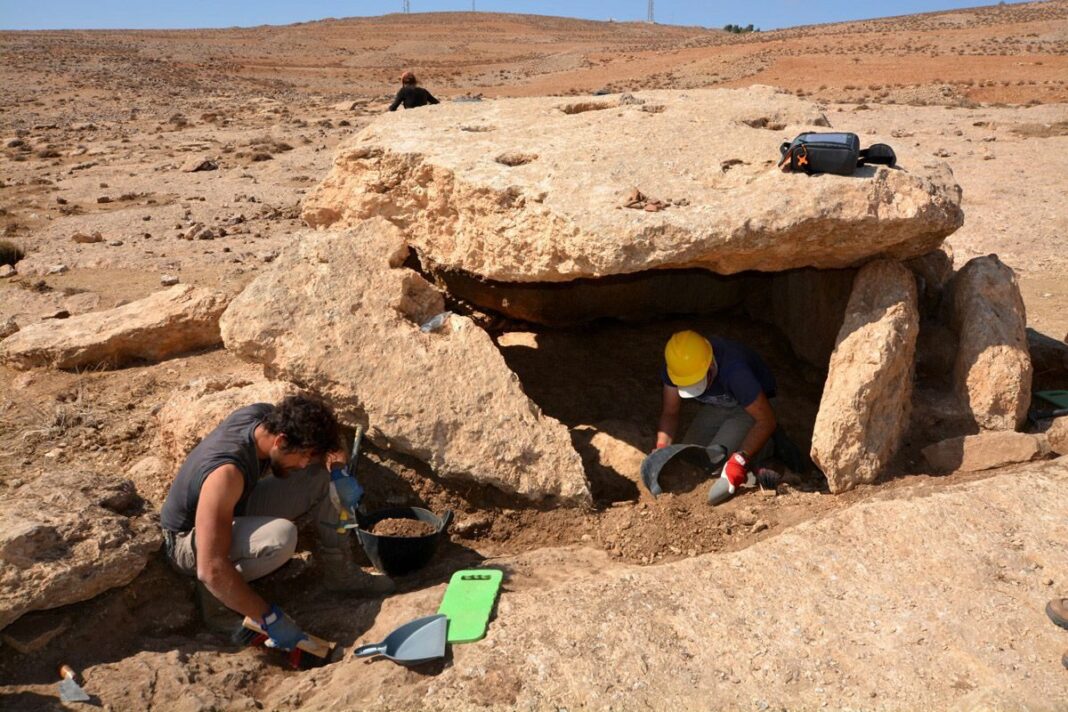Fragments of pottery, flint tools and bone remains have been discovered in Jordan by archaeologists from the Jagiellonian University under megaliths dating back about 5,000 years. Perhaps these ancient structures were not only burial places for members of the community, but also marked ritual spaces, researchers say. The study was carried out by archaeologists at the Jagiellonian University, who have been working for several years in southern Jordan. The purpose of their research was the so-called Dolmensko Pole, located near the village of Shaubak. Dolmens are structures consisting of stones placed vertically in the ground and a large rock block on them. Constructions of this type are also called megaliths (from gr .: megas – large, lithos – stone). People built them in different parts of the world between the Neolithic and Bronze Ages, including in Bulgaria.
The creators of the structures, dating to about 5,000 years ago, were probably nomads moving around the Arabian Peninsula. Maybe they came back to them from time to time. “In one of the dolmens we found a burial and several objects, probably placed together with the deceased. We hope that laboratory tests will allow us to determine exactly when he was buried, and our planned genetic tests will allow us to answer many questions about the sex and health status or origin of the person buried here. Maybe that’s why we’ll solve the mystery of the Jordanian megaliths, “said Dr. Piotr Kolodziejczyk, who led the study. In the tombs, researchers also found fragments of ceramic vessels and flint tools, as well as in several bone remains, probably from burials placed under stone colossi. Researchers were surprised to find several unfinished dolmens. According to archaeologists, they were abandoned at various stages of construction, which allows a fairly accurate reconstruction of the process of their formation.
“Thanks to simple tools, probably made of wood, and not too complicated techniques for chipping rocks and lifting and wedging them with smaller stones, it was possible to work in a small group to create these amazing structures relatively quickly. Now we need to calculate their weight exactly to determine exactly how many people should have been in such a team of builders, “added Dr. Kolodziejczyk. According to him, the largest stone blocks weigh several tens of tons. According to researchers, it can not be ruled out that the studied dolmens were not only a burial place for members of the community, but also marked a ritual space, as evidenced by the walls surrounding the area of the Dolmensko field and a mysterious pool with a well several meters deep. They plan to make preliminary analyzes of two more sites in the southern Jordan region by the end of November, and hope to find more unknown megalithic structures thanks to information gathered by the local population.









